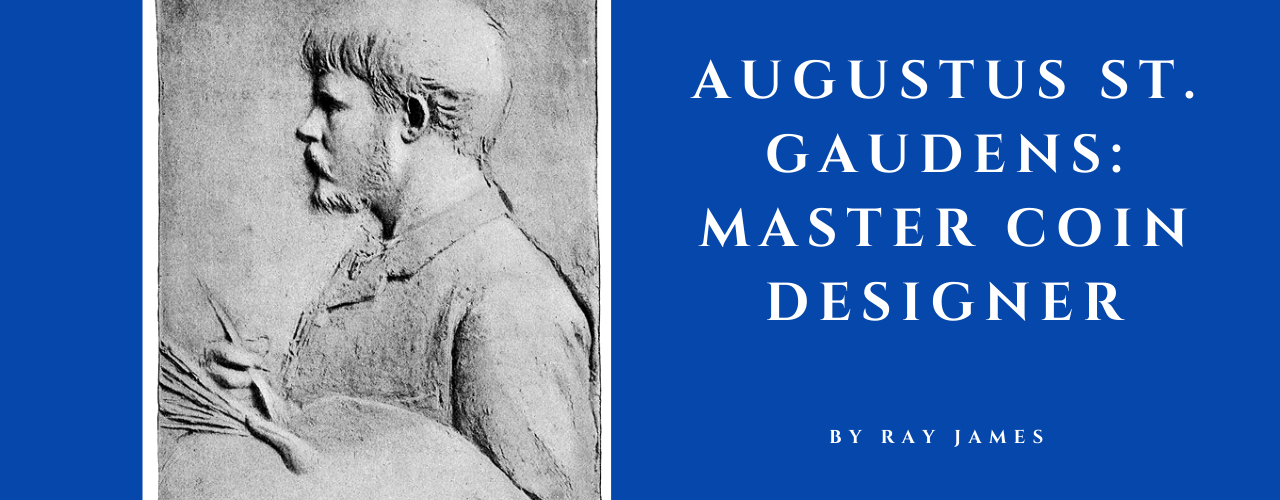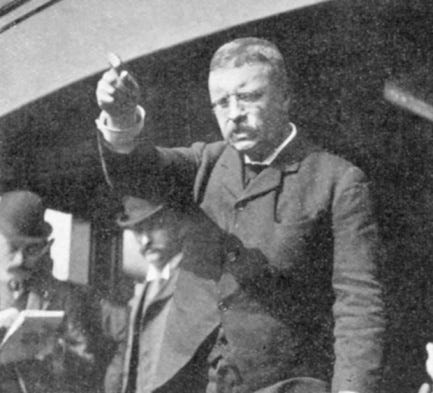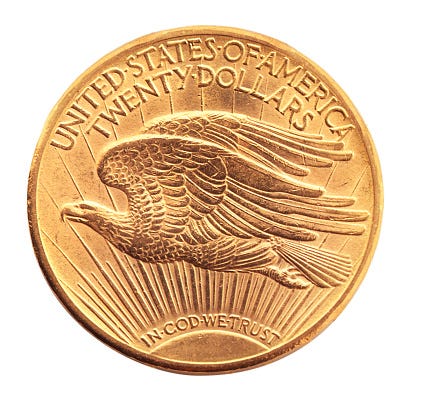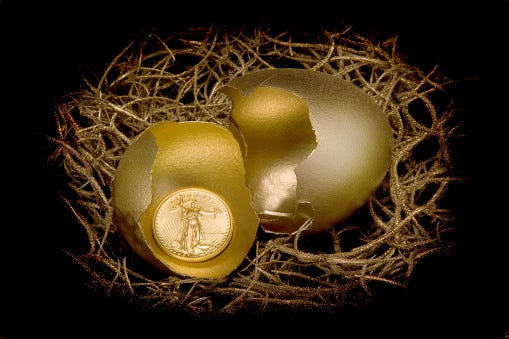Local Storage seems to be disabled in your browser.
For the best experience on our site, be sure to turn on Local Storage in your browser.
Augustus St. Gaudens: Master Coin Designer

By Ray James
Augustus Saint-Gaudens: Early Life
Augustus St-Gaudens, the designer of some of the most beautiful gold coins ever struck, was born in Dublin, Ireland, in 1848. His family came to the United States shortly after his birth. He primarily grew up in New York City, where he apprenticed as a cameo cutter when he was a teenager. St. Gaudens studied at the famous Cooper Union and the National Academy of Design. He would later enroll in the renowned École des Beaux-Arts in Paris. Before returning to the United States, he studied in Rome, where he met Augusta Fisher Homer, his wife-to-be.
In the decades after his return to the United States, St. Gaudens built his considerable reputation on high profile sculptures placed in public parks and buildings. During this time, he took on students, among them were future numismatic designers. He taught James Earle Fraser, who would go on to design the Buffalo Nickel, Adolph A. Weinman, who would go on to create the Walking Liberty Half Dollar, and Bela Lyon Pratt, who would go on to design the Indian Head dollar.
Saint-Gaudens and President Theodore Roosevelt
At the turn of the 20th Century Augustus Saint-Gaudens was probably the most famous artist in America. He had sculptures in prominent spaces in New York City, Boston, Chicago and in several European cities.
When President Roosevelt ascended to the Presidency, one of his pet projects was to redesign the circulating coinage, which he loathed and felt was boring. The basic design of the gold coinage did originate in 1838 and had remained mostly the same since that time.
The President approached the artist with a proposition to design a new inaugural medal, and St. Gaudens agreed. Upon completion of the project, Roosevelt asked Saint-Gaudens to redesign circulating coinage in the United States. He started with the $20 Gold Double Eagle and followed it with the $10 “Indian” Eagle coin. He also designed an unproduced cent.




St. Gaudens Famous Double Eagle Design
The $20 Gold Double Eagle, sometimes just called the St. Gaudens, is often regarded as the most elegant and beautiful coin ever struck in gold by the United States. The obverse of the coin features the full-length image of Liberty striding forward as she holds the torch of enlightenment overhead in her right hand. She also carries the olive branch of peace in her left. The rays of the rising sun backlight her. The United States Capitol building appears in the background at her side. The first issue of the series used roman numerals for the date, but this transitioned to standard Arabic numerals in 1908. Over her head, appears the legend “Liberty” encircling the image with 46 stars, representing the number of states in 1907.
The reverse of the coin is equally majestic. It features a spectacular bald eagle in flight over the rising sun. Prominent rays from the sun fill the background. Initially, the phrase “In God We Trust” did not appear on the coin. The inscription was left out at the suggestion of President Roosevelt. The President was a religious man, and he felt that including the phrase would be sacrilegious because the coin could be used in bars, brothels, and gambling halls. The motto was added in later in 1908 by a devoted Congress. Legends on the reverse include “The United States of America” and “Twenty Dollars.”
Other Notable St. Gaudens Designs
American Gold Eagle
In 1986, the Saint-Gaudens Double Eagle obverse was honored—and made available to the average collector—as it was used as the obverse of the American Gold Eagle coin series. The series features a variety of sizes, which include 1/10 oz, ¼ oz, ½ oz, and 1 oz.—something for every budget.
2009 Ultra High Relief
Again, the famous Double Eagle design was honored in 2009 when the model was resurrected by the United States Mint. This modern iteration was struck in an ultra-high relief version and featured Roman numerals for the year, and an infamous wire rim. This version of the coin more perfectly represents the original design of the coin as designed by the artist.
$10 Indian
The $10 Gold Indian obverse features the head of Liberty adorned not with her inscribed crown of the previous 70 years but with a Native American ceremonial headdress comprised of feathers. The inclusion of the headdress was a unique departure from the familiar coronet of prior gold coin issues. It was done at the request of President Roosevelt himself. The rim of the design features thirteen stars above Liberty’s head, while the band of her war bonnet is inscribed with her name.
The St. Gaudens Cent Unproduced Cent
Work on a redesign of the one cent piece was in-process at the time St-Gaudens died. In 1909 the famous and long-lived Lincoln Cent replaced the long-running Indian Head Cent.
The obverse of this cent features Liberty’s head crowned with a laurel wreath. The profile is remarkably similar to the $10 Indian image. Overhead thirteen stars appear along the rim while the legend “Liberty” appears below. The reverse of the coin is encircled by a laurel wreath in which the inscriptions “United States of America” “One Cent” and the year appear. The St-Gaudens homestead has the original plasters modeled during Saint-Gauden’s life. From these plasters, private-issue medals have been struck for Numismatic collectors.
Collecting Saint-Gaudens
Saint-Gaudens coins are among the most coveted in all American coinage. Apart from the highly desirable and scarce key dates, many collectors spend a lifetime collecting and upgrading their Saint-Gaudens type sets.
The Double Eagle has several pricey early issues. The two major types are the “No Motto” type, of which the average collector can locate an excellent uncirculated specimen from 1908 with little effort. The “With Motto” space is often filled with the mintages from 1924, 1925, 1927 or 1928. Many of these examples spent their lives in canvas bags in bank vaults overseas. They often did not circulate, and most have decent design details and at least some original mint luster.
The $10 Indian also has two major types: the “With Motto” later mintages and the early “No Motto” type. By far, the most plentiful and most often collected coin for this type is the 1932 issue. This 1932 edition is one of the few widely available U.S. gold coins struck in the depth of the Great Depression of the Thirties. This Philadelphia issue is often lustrous, detailed and typically has decent eye appeal.


Legacy of Saint-Gaudens: Saint-Gaudens National Historical Park
When Saint-Gaudens was recruited for Roosevelt’s “pet scheme” involving the “Renaissance of American Coinage” redesign, he was ill. He had been diagnosed with cancer in 1900. In his later years, he was regarded as America’s foremost artist. He established the renowned Cornish Colony in New Hampshire as a retreat for artists. He first lived there seasonally, before moving there fulltime in 1900 until he died in 1907.
The Cornish Colony is now a National Park Historic Site called the Saint-Gaudens National Historical Park. The park is dedicated to arts education and preserving the legacy of Augustus Saint-Gaudens. The grounds are gorgeous and studden with lakes and grand vistas. The Park also contains several of this bronze scultptures located on wooded pathways located on the grounds. To date, almost 10,000 objects are in the collection. The National Historical Park partners with the Saint Gaudens Memorial, a seperate non-profit group created by the artist's widow.
Sources Used:
https://www.theodorerooseveltcenter.org/Learn-About-TR/TR-Encyclopedia/Culture%20and%20Society/Augustus%20Saint%20Gaudens
https://www.ngccoin.com/news/article/2615/
https://www.usmint.gov/coins/coin-medal-programs/ultra-high-relief-double-eagle
https://www.ngccoin.com/coin-explorer/saint-gaudens-20-1907-1933-pscid-70-desig-ms
https://www.ngccoin.com/coin-explorer/indian-head-10-1907-1933-pscid-68-desig-ms
https://www.usacoinbook.com/encyclopedia/coin-designers/augustus-saint-gaudens/
Striking Change: the Great Artistic Collaboration Of Theodore Roosevelt and Augustus Saint-Gaudens Michael Moran - Whitman Pub. – 2008
“GovMint.com® is a retail distributor of coin and currency issues and is not affiliated with the U.S. government. The collectible coin market is unregulated, highly speculative and involves risk. GOVMINT.COM MAKES NO WARRANTIES, REPRESENTATIONS, OR PROMISES AS TO ITS PRODUCTS EXCEPT THOSE SET FORTH IN ITS TERMS AND CONDITIONS, AND NO IMPLIED WARRANTIES OF MERCHANTABILITY OR FITNESS ARE MADE. Prices, facts, figures and populations deemed accurate as of the date of publication but may change significantly over time. © 2019 GovMint.com. All rights reserved.”
Copyright 2020 GovMint. All Rights Reserved. GovMint.com does not sell coins and numismatics as investments, but rather as collectibles. Please review GovMint’s Terms and Conditions, Terms of Use and Privacy Policy before using this website and prior to purchasing from GovMint. All website content is for reference use only and does not constitute investment, legal or financial advice. We encourage the sharing and linking of our information but reproduction of our news and articles without express permission is prohibited. Instead of reproducing, please provide the link to the original article or use the share buttons provided.





